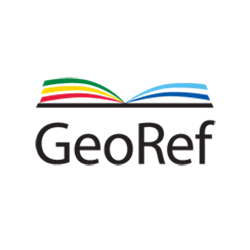Effect of boron impregnation on the density and dynamic modulus of three angiosperm woods
DOI:
https://doi.org/10.17981/ingecuc.18.2.2022.01Keywords:
wood technology, hot-cold bath, spathodea campanulata, fraxinus americana, albizia plurijugaAbstract
Introduction: Wood is a biodegradable material and its use requires information on the effect of protective substances on its mechanical properties. In such a way that it is important to develop technology for its conservation when it is in service.
Objective: To impregnate with boron salts using the hot-cold bath process test specimens of Fraxinus americana, Albizia plurijuga and Spathodea campanulata.
Method: Boron salt retention, density, wave velocity and dynamic modulus of the wood were determined. Stress wave tests were performed before and after the impregnation treatment.
Results: The retention increases as the concentration increases and decreases as the density of the wood increases. No statistically significant differences were observed between the density and wave velocity samples of each species. No differences were found for the elasticity modules of S. campanulata. For F. americana and A. plurijuga differences were identified.
Conclusions: The results suggest that the retention capacity of boron salts from wood depends mainly on the species. The average values of boron salt retention for concentrations of three percent were greater than the lower toxic retention limit to meet the minimum requirements of the standards for wood used indoors. For engineering design and calculation purposes, it is advisable to consider the scope of the results of this research that is limited to small-sized specimens.
Downloads
References
A. Pizzi, “Wood products and green chemistry”, Ann. For. Sci., vol. 73, pp. 185–203, Mar. 2016. https://doi.org/10.1007/s13595-014-0448-3
D. Sandberg, A. Kutnar & G. Mantanis, “Wood modification technologies”, Iforest, vol. 10, no. 6, pp. 895–908, Dec. 2017. https://doi.org/10.3832/ifor2380-010
J. Winandy & J. Morrell, “Improving the utility, performance, and durability of wood- and bio-based composites”, Ann. For. Sci., vol. 74, no. 1, pp. 1–11, Mar. 2017. https://doi.org/10.1007/s13595-017-0625-2
J. Elvira-León, J. Chimenos, C. Isábal, J. Monton, J. Formosa & L. Haurie, “Epsomite as flame retardant treatment for wood: Preliminary study”, Constr. Build. Mater., vol. 126, pp. 936–942, Nov. 2016. https://doi.org/10.1016/j.conbuildmat.2016.09.107
F. Wang, J. Liu & W. Lv, “Thermal degradation and fire performance of wood treated with PMUF resin and boron compounds”, FAM, vol. 41, no. 8, pp. 1051–1057, Jun. 2017. https://doi.org/10.1002/fam.2445
G. Tondi, S. Wieland, T. Wimmer, M. Thevenon, A. Pizzi & A. Petutschnigg, “Tannin-boron preservatives for wood buildings: mechanical and fire properties”, Eur. J. Wood Wood Prod., vol. 70, no. 5, pp. 689–696, Sept. 2012. https://doi.org/10.1007/s00107-012-0603-1
F. Obounou-Akong, P. Gérardin, M. Thévenon & C. Gérardin-Charbonnier, “Hydrogel-based boron salt formulations for wood preservation”, Wood Sci. Technol., vol. 49, n. 3, pp. 443–456, Feb. 2015. https://doi.org/10.1007/s00226-015-0701-4
E. Baysal, E. Tomak, E. Topaloglu & E. Pesman, “Surface properties of bamboo and scots pine impregnated with boron and copper based wood preservatives after accelerated weathering”, Maderas, Cienc. tecnol., vol. 18, no. 2, pp. 253–264, Apr. 2016. https://doi.org/10.4067/S0718-221X2016005000023
S. Ahn, S. Oh, I. Choi, G. Han, H. Jeong, K. Kim, Y. Yoon & I. Yang, “Environmentally friendly wood preservatives formulated with enzymatic-hydrolyzed okara, copper and/or boron salts”, J. Hazard. Mater., vol. 178, no. 1-3, pp. 604–611, Jun. 2010. https://doi.org/10.1016/j.jhazmat.2010.01.128
H. Simsek, E. Baysal & H. Peker, “Some mechanical properties and decay resistance of wood impregnated with environmentally-friendly borates”, Constr. Build. Mater., vol. 24, no. 11, pp. 2279–2284, Nov. 2010. https://doi.org/10.1016/j.conbuildmat.2010.04.028
E. Tomak, H. Viitanen, U. Yildiz & M. Hughes, “The combined effects of boron and oil heat treatment on the properties of beech and Scots pine wood. Part 2: Water absorption, compression strength, color changes, and decay resistance”, J. Mater. Sci., vol. 46, no. 3, pp. 608–615, Sept. 2010. https://doi.org/10.1007/s10853-010-4860-2
A. Can & H. Sivrikaya, “Surface characterization of wood treated with boron compounds combined with water repellents”, Color, vol. 44, no. 3, pp. 462–472, Jun. 2019. https://doi.org/10.1002/col.22357
B. Lesar, Ž. Gorišek & M. Humar, “Sorption properties of wood impregnated with boron compounds, sodium chloride and glucose”, Dry. Technol., vol. 27, no. 1, pp. 94–102, Jan. 2009. https://doi.org/10.1080/07373930802565947
B. Lesar, A. Straže & M. Humar, “Sorption properties of wood impregnated with aqueous solution of boric acid and montan wax emulsion”, J. Appl. Polym. Sci., vol. 120, no. 3, pp. 1337–1345, Nov. 2010. https://doi.org/10.1002/app.33196
A. Temiz, E. Gezer, U. Yildiz & S. Yildiz, “Combustion properties of alder (Alnus glutinosa L.) Gaertn. subsp. barbata (C.A. Mey) Yalt.) and southern pine (Pinus sylvestris L.) wood treated with boron compounds”, Constr. Build. Mater., vol. 22, no. 11, pp. 2165–2169, Nov. 2008. https://doi.org/10.1016/j.conbuildmat.2007.08.011
Ş. Yasar, M. Fidan, M. Yaşar, M. Atar & E. Alkan, “Combustion properties of impregnated spruce (Picea orientalis L.) wood”, Constr. Build. Mater., vol. 143, pp. 574–579, Jul. 2017. https://doi.org/10.1016/j.conbuildmat.2017.03.141
A. Özçifçi, Y. Örs & B. Uysal, “Determination of some physical and mechanical properties of laminated veneer lumber impregnated with boron compounds”, J. Appl. Polym. Sci., vol. 105, no. 4, pp. 2218–2224, Aug. 2007. https://doi.org/10.1002/app.26217
D. Marney & L. Russell, “Combined fire retardant and wood preservative treatments for outdoor wood applications. A review of the literature”, Fire Tech., vol. 44, no. 1, pp. 1–14, Mar. 2008. https://doi.org/10.1007/s10694-007-0016-6
S.N. Kartal, W.J. Hwang & Y. Imamura, “Combined effect of boron compounds and heat treatments on wood properties: Chemical and strength properties of wood”, J. Mater. Process. Technol., vol. 198, no. 1-3, pp. 234–240, Mar. 2008. https://doi.org/10.1016/j.jmatprotec.2007.07.001
D. Obanda, T. Shupe & H. Barnes, “Reducing leaching of boron-based wood preservatives. A review of research”, Bioresour. Technol., vol. 99, no. 15, pp. 7312–7322, Oct. 2008. https://doi.org/10.1016/j.biortech.2007.12.077
V. Lahtela, K. Hämäläinen & T. Kärki, “The effects of preservatives on the properties of wood after modification”, Balt. For., vol. 20, no. 1, pp. 189–203, Nov. 2013. Available: https://www.cabdirect.org/cabdirect/abstract/20143327849
L. Ávila-Calderón, M. Herrera-Ferreyra y D. Raya-González, Preservación de la madera en México. MRL, MX: UMSNH, 2012.
C. Del Menezzi, M. Amorim, M. Costa & L. Garcez, “Evaluation of thermally modified wood by means of stress wave and ultrasound nondestructive methods”, Mat. Sci., vol. 20, no. 1, pp. 61–66, Mar. 2014. https://doi.org/10.5755/j01.ms.20.1.3341
A. Freitas, J. Gonçalez y C. Del Menezzi, “Tratamento termomecânico e seus efeitos nas propriedades da Simarouba amara (Aubl.)”, Floresta e Ambient., vol. 23, no. 4, pp. 565–572, Dec. 2016. https://doi.org/10.1590/2179-8087.144115
L. Shan-qing & F. Feng, “Comparative study on three dynamic modulus of elasticity and static modulus of elasticity for Lodgepole pine lumber”, J. For. Res., vol. 18, no. 4, pp. 309–312, Dec. 2007. https://doi.org/10.1007/s11676-007-0062-4
U. Dackermann, K. Crews, B. Kasal, J. Li, M. Riggio, F. Rinn & T. Tannert, “In situ assessment of structural timber using stress-wave measurements”, Mater. Struct., vol. 47, no. 5, pp. 787–803, May. 2014. https://doi.org/10.1617/s11527-013-0095-4
M. Yamasaki, C. Tsuzuki, Y. Sasaki & Y. Onishi, “Influence of moisture content on estimating Young’s modulus of full-scale timber using stress wave velocity”, J. Wood Sci., vol. 63, no. 3, pp. 225–235, Mar. 2017. https://doi.org/10.1007/s10086-017-1624-5
Y. Yu, Y. Liu, M. Gong, Z. Xu & Y. Fang, “R&R study of using a stress wave timer to measure the elastic modulus of structural dimension lumber” Meas., vol. 95, pp. 293–296, Jan. 2017. https://doi.org/10.1016/j.measurement.2016.10.040
V. Nasir, S. Nourian, S. Avramidis & J. Cool, “Stress wave evaluation by accelerometer and acoustic emission sensor for thermally modified wood classification using three types of neural networks”, Eur. J. Wood Wood Prod., vol. 77, no. 1, pp. 45–55, Jan. 2019. https://doi.org/10.1007/s00107-018-1373-1
J. Sotomayor-Castellanos y S. Correa-Jurado, “Retención de sales de boro en la madera y su efecto en el módulo de elasticidad dinámico”, Rev. Científ., vol. 1, no. 24, pp. 90–99, Jun. 2014. https://doi.org/10.14483/10.14483/udistrital.jour.RC.2016.24.a9
Wood - Sampling methods and general requirements for physical and mechanical testing of small clear wood specimens, ISO 3129:2019, International Organization for Standardization-ISO, GE, CH, 2019. Available: https://www.iso.org/standard/74839.html
Physical and mechanical properties of wood. Test methods for small clear wood specimens. Part 1: Wood. Determination of moisture content for physical and mechanical tests, ISO 13061-1:2014, International Organization for Standardization-ISO, GE, CH, 2014. Available: https://www.iso.org/standard/60063.html
Wood - Physical and mechanical properties of wood. Test methods for small clear wood specimens. Part 2: Determination of density for physical and mechanical tests, ISO 13061-2:2014, International Organization for Standardization-ISO, GE, CH, 2014. Available: https://www.iso.org/standard/60064.html
Industria de la construcción - Preservadores para madera - Clasificación y requisitos, NMX-C-178-ONNCCE-2014, Organismo Nacional de Normalización y Certificación de la Construcción y Edificación-ONNCCE, CDMX, MX, 2014.
H. Simsek, E. Baysal, M. Yilmaz & F. Culha, “Some mechanical properties of wood impregnated with environmentally-friendly boron and copper based chemicals”, Wood Res., vol. 58, no. 3, pp. 495–504, Sept. 2013. Available: http://www.woodresearch.sk/wr/201303/16.pdf
Use category system: User specification for treated wood, AWPA U1-19, American Wood Protection Association-AWPA, BIRM, AL, USA, 2019. https://awpa.com/
Industria de la construcción - Madera preservada a presión - Clasificación y requisitos, NMX-C-322-ONNCCE-2014, Organismo Nacional de Normalización y Certificación de la Construcción y Edificación-ONNCCE, CDMX, MX, 2014
A. Berrocal, F. Muñoz, y G. González, “Ensayo de penetrabilidad de dos preservantes a base de boro en madera de melina (Gmelina arborea) crecida en Costa Rica”, RFMK, vol. 1, no. 3, pp. 1–12, Feb. 2004. Disponible en https://revistas.tec.ac.cr/index.php/kuru/article/view/559/485
T. Dhamodaran & R. Gnanaharan, “Boron impregnation treatment of Eucalyptus grandis wood”, Bioresour. Technol., vol. 98, no. 11, pp. 2240–2242, Aug. 2007. https://doi.org/10.1016/j.biortech.2006.08.012
S. Salman, A. Pétrissans, M. Thévenon, S. Dumarçay, D. Perrin, B. Pollier & P. Gérardin, “Development of new wood treatments combining boron impregnation and thermo modification: Effect of additives on boron leachability”, Eur. J. Wood Wood Prod., vol. 72, no. 3, pp. 355–365, Feb. 2014. https://doi.org/10.1007/s00107-014-0787-7
J. Sotomayor y J. Villaseñor, “Retención de sales de boro en tres maderas mexicanas. Evaluación mecánica por vibraciones”, Rev. Fac. Cienc. Tecnol., vol. 26, no. supl. 1, pp. 40–46, Dic. 2016. Disponible en https://www.fceqyn.unam.edu.ar/recyt/index.php/recyt/article/view/745
J. Tamarit y J. López, Xilotecnología de los principales árboles tropicales de México. PU, MX: INIFAP, 2007.
H. Ritcher, J. Silva y R. Rodriguez, Fichas de propiedades tecnológicas y usos de maderas nativas de México e importadas. GUAD, MX: CONAFOR, 2010.
J. Sotomayor, Banco FITECMA de características físico-mecánicas de maderas mexicanas. MRL, MX: UMSNH, 2015.
J. Sotomayor y M. Ramírez, “Densidad y características higroscópicas de maderas mexicanas. Base de datos y criterios de clasificación”, IIM, vol. 9, no. 3, pp. 1–30, Dic. 2013. Recuperado de https://laboratoriodemecanicadelamadera.weebly.com/uploads/2/7/6/9/27690625/investigacin_e_ingeniera_de_la_madera_2013_vol._9_no._3.pdf
J. Sotomayor, “Módulos de elasticidad e índices de calidad de maderas mexicanas. Síntesis de datos del Laboratorio de Mecánica de la Madera”, IIM, vol. 15, no. 1, pp. 1–64, Abr. 2019. Disponible en https://laboratoriodemecanicadelamadera.weebly.com/revistas.html
J. Sotomayor, M. Giraldo, J. Gené, E. Correal y M. Vilches, “Efecto de sales de boro en la densidad y en el módulo de elasticidad de tres maderas mexicanas”, Ingeniería, vol. 28, no. 2, pp. 31–44, Sept. 2018. https://doi.org/10.15517/ri.v28i2.31608
GBIF Secretariat, “Fraxinus americana L.,” (2021). GBIF Backbone Taxonomy. Checklist dataset. https://doi.org/10.15468/39omei
GBIF Secretariat, “Albizia plurijuga (Standl.) Britton & Rose,” (2021). GBIF Backbone Taxonomy. Checklist dataset. https://doi.org/10.15468/39omei
GBIF Secretariat, “Spathodea campanulata (P. Beauv),” (2021). GBIF Backbone Taxonomy. Checklist dataset. https://doi.org/10.15468/39omei

Published
How to Cite
Issue
Section
License
Copyright (c) 2022 INGE CUC

This work is licensed under a Creative Commons Attribution-NonCommercial-NoDerivatives 4.0 International License.
Published papers are the exclusive responsibility of their authors and do not necessary reflect the opinions of the editorial committee.
INGE CUC Journal respects the moral rights of its authors, whom must cede the editorial committee the patrimonial rights of the published material. In turn, the authors inform that the current work is unpublished and has not been previously published.
All articles are licensed under a Creative Commons Attribution-NonCommercial-NoDerivatives 4.0 International License.


 English
English
 Español (España)
Español (España)






















